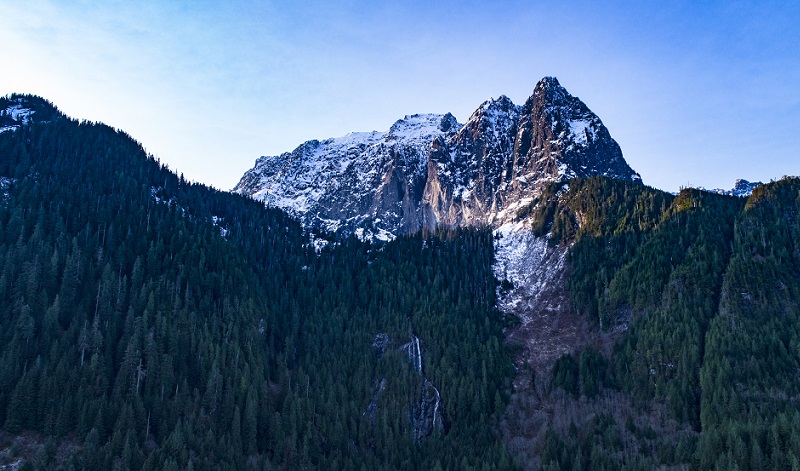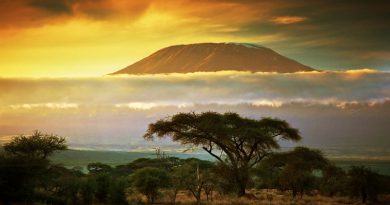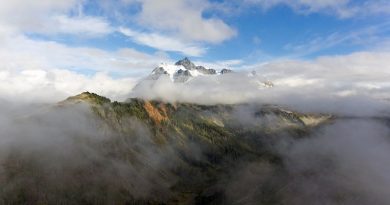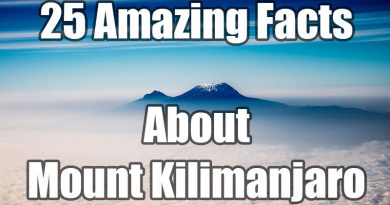Washington is one of the most beautiful states in America. Rightfully nicknamed “The Evergreen State, this state has everything from forests of evergreens, rocky and sandy beaches, mountains, arid grasslands, and rocky valleys. In other words, it’s the outdoor-loving and adventurous rock climber’s paradise.

The Cascade Mountain Range along the west side of the state has a plethora of diverse and scenic locations but the climbing isn’t limited to the mountains. There are plenty of fun spots up towards Canada, along the Olympic Peninsula, south towards Vancouver, centrally located near the Tri-Cities, and even up east around Spokane.
Out of all these possible locations however, Washintonians and tourists alike recognize that some locations are simply superior.
Thus, without further ado, here are the top 9 spots in the state to go out and send.
9. Minnehaha
This spot is located along the Spokane River directly in-between Spokane proper and Spokane Valley. The driving distance from downtown Spokane is 5.3 miles or a 13 minute drive in good traffic. It’s a favorite among locals so if you head there on the weekend, don’t be surprised if students from the area’s four different universities make it a crowded location. Climbing at the Minnehaha Rocks began in the 1950s as Spokane’s first major rock climbing spot.
The area was later scouted out by John Roskelley; a climber, mountaineer, and conservationist; who began establishing routes in the 1970s. Climbers at Minnehaha made this spot a center for activism. Roskelley, in his service as the Spokane County Commissioner between 1995-2004 made a great effort to have the Minnehaha rocks protected2. He and avid climbers who loved the area helped turn the location into an area that is now called “John H. Shields Park.” In recent years, the Spokane Mountaineers have also sponsored anonymous graffiti removal to make the space a more natural environment.
The stone itself in Minnehaha is granite and takes a 5-minute-tops approach on flat ground to access. Granite is igneous (meaning it is made from solidified lava) and is a hard, erosion-resistant material. It tends to have weaknesses vertical-wise and can have some of the best cracks for climbing. Minnehaha, however, does not have much in the way of good crack climbs.
This granite is coarse and is rather rare for the Spokane area. Most of the area’s rocks are there as a result of glacial flooding in the Pleistocene era and consist of gravel and sand deep under which there are large sandstone deposits. There is also a large amount of basalt in the southern part of Spokane. The Minnehaha Rocks are home to 67 different climbing routes, all of which can be toproped. Some of the best routes include Smokey on Fire, The Dihedral, The Prow, and Don Quixote. Smokey on Fire is a 15-foot V8 boulder climb with a rather difficult start. The Dihedral makes for a good traditional climb. It’s a 5.9+ 80-foot climb but locals claim it’s rather difficult for its grade. The Prow is a blocky, steep 5.10 30-foot sport climb. Don Quixote is a traditional 5.10 45-foot crack climb. It involves a difficult pulling the roof maneuver at the beginning, but once that is past, it’s a simple crack climb.
8. Gold Bar
This spot is regarded as one of the best places to boulder in Washington and is the top bouldering location near Seattle. It is in Gold Bar, Wash. 49.6 miles from Seattle proper or 36.4 miles from Everett. Being in The Cascades, there is an abundance of fantastic views around the bouldering site. Getting the actual site is a bit tricky as past visitors to Gold Bar abused road privileges meaning that everyone must now hike to the boulders. Be sure to be courteous and respectful while there, don’t park in way of the road, and show your Discover Pass to avoid getting ticketed.
All the boulders here are made of a good, rough granite. Due to all the moisture in the West Side atmosphere, moss on the routes has been problematic so don’t be surprised if one of the great routes is overgrown with the fuzzy green stuff.
Joe Sambataro along with the Access Fund and the Washington Climbers Coalition (WCC) have done important work in repairing relationships between the climbing community and the Department of Natural Resources. The WCC is currently negotiating with the DNR to create an upgraded trail to the boulders so that climbers can have easier access.
The Gold Bar Boulders have around 300 different problems ranging from a V0 to V11 on 6 different boulder sets. Some of the favored routes include Five Star Arete, Aries: God of War, Equinox, Kombucha, Bricklayer, and Midnight Lichen. Five Star Arete is the best-liked climb on the Five Star Boulder. It’s a solid V6 that goes up about 20 feet. Aries: God of War is a V8 and the best route in the Aries boulders. Equinox is one of the most difficult climbs at Gold Bar, up at V10. It is located on the Equinox Boulder. Kombucha is a V7 on the Five Star Boulder located just to the right of Five Star Arete. Bricklayer is a simple V2 on the Forest Boulder. It does go a bit high so beginners-be-warned. Midnight Lichen is a V4 on the Forest Boulder. There is a sketchy stump directly behind it so watch out and make sure you have a spotter with you.
7. Ozone
The Ozone climbing wall is a popular Portland/Vancouver spot in the Columbia River Gorge just 10.2 miles from Camas and 23.8 miles from Vancouver proper. The wall itself is accessible by a short trail hike from the road. Parking is the greatest issue as this is a busy location and parking along the highway is the only option. Locals refer to the wall as “the outdoor gym of Portland.”
The rock at Ozone is composed of a compacted basalt, an igneous rock and the most common form of bedrock on the planet. Most of the earth’s sea beds are made of this hard, lava-formed rock. The geological development of the Columbia River Gorge is fascinating and involved a large number of volcanoes and the same glacier that deposited much of the rocks seen across Eastern Washington.
The first thousand volcanoes erupted in the Eocene era and from then, more eruptions continued forming the rock layers. Much later, in the Pleistocene, the Cascade mountains rose causing the Columbia River to erode a deep channel through them. This erosion was sped up greatly by the Missoula Floods later in the Pleistocene eventually baring the stunning basalt formations that had been left behind.
Nowadays, adventurous climbers can explore these ancient formations vertically with any of the 106 different routes that Oxone has to offer. Of these routes, Chainmail, High Plains Drifter, Rauch Factor, and Dark Lord are the favorites of local climbers. Chainmail is a 40-foot 5.11b sport climb, High Plains Drifter is a 75-foot 5.10+ sport climb, Rauch Factor is a 90-foot 5.10b/c traditional climb, and Dark Lord is a 65-foot 5.12c sport climb.
Most of the walls in Ozone are named after Lord of the Rings references for any nerds who feel the need to climb Mordor.
6. Deep Creek
9.5 miles out of Spokane proper lies a mosquito-infested canyon called “Deep Creek” that is home to some of the best sport climbs in Eastern Washington. There is a reason that Spokane’s motto is “near nature, near perfect.” This spot would make anyone wonder that there is any civilization within the next 50 miles. The approach from the road is by foot but is rather short.
The rock in Deep Creek is a jagged basalt. The formation of this canyon is correlated with the Columbia River Basalt flood and the Latah Formation. The introduction of basalt into the environment resulted in the nearby bodies of water depositing sediments that would eventually solidify into Latah, or clay. In Deep Creek, the Latah mingles with the basalt as well as grey shale.
In a published report, Spokane County contemplates whether the Latah clay in Deep Creek is worth gathering. Thankfully for this beautiful spot and the climbers who enjoy it, the basalt means that this clay is not as useful for construction and is inaccessible; thus, the area is unlikely to be disturbed.
The easiest climb in Deep Creek is a 5.11 so it certainly is not a beginner-friendly location. The routes available though are well-liked. Some of the regional favorites are Quiver, The Masochist, Dump Truck, and Naked Man. Quiver is a 5.13 on the Main Wall, an area that is only accessible in the dry season. The Masochist is a 5.13b in The Pit, a wall that tend to be less wet in the early Summer. Dump Truck is a 5.12b that goes 50 feet up on the Main Wall. Finally, Naked Man was the first route to be put in Deep Creek. It is located on the Main Wall, is graded 5.12a, and goes up 60 feet.
5. Waka Beach
Some parts of the Olympic Peninsula are closer to Canada than they are to Seattle and Waka Beach is one of those spots. It’s 6.6 miles southwest of Port Angeles, a charming town on the tip of the peninsula, and 88.4 miles away from Seattle. Waka Beach is a scenic crag that stretches along the Elwha River. Since it is so close to the river, however, it is only accessible between July and October as otherwise the beaches are covered by water.
The rock at Waka Beach is a soft sandstone that tends to grow quite mossy due to the moist environment on the Peninsula. Because of the softness and mossy-ness, it’s important to be mindful when climbing Waka Beach. It is even more important to make sure the rock is dry before you climb. Climbing wet sandstone can cause rapid erosion and can even be dangerous for the climber if a rock falls while they are climbing. It does have some good qualities however, for example it has excellent friction qualities and it makes for fantastic cracks.
Out of the 21 climbs in Waka Beach, there are four that climbers prefer, those being My First 14er, Sum’bitch-Knockout, Waka/Jawaka, and Haus Frau. My First 14er is a 5.8 sport climb. Sum’bitch-Knockout is a more challenging 5.12a/b sport climb that goes up 50 feet. Waka/Jawaka is a creative, 50-foot, 5.9 sport climb. There is a new anchor that was bolted in at the top of the route that should always be used en lieu of the old anchor that was attached to a tree and caused erosion. Haus Frau is one of the easier routes on this crag. It’s a 5.7 sport climb that goes up 50 feet.
4. The Enchantments


Just to the southeast of Leavenworth, the climbs in the Mt. Stuart/Enchantments region is a bit off the grid. It is, however, one of the most stunning areas in Washington and well-worth the long hike or multi-day backpacking trip it requires to get there.
The shortest route starts from the Stuart Lake/Colchuck Lake trailhead and involves a 6-mile hike in. Other options include the Snow Creek trailhead (10 miles), the 8 Mile trailhead (13 miles), or the Ingalls Creek trailhead (off-trail hiking for those who are experienced)11. The rock in the area is all fantastic granite that also makes the length journey worth your while. In order to hike to The Enchantments, however, you must enter the U.S. Forest Service’s advance lottery program.
The pioneer who first climbed up to The Enchantments was Fred Beckey and his mountaineering partners. With gear less developed than our current and state-of-the-art climbing gear, Beckey and his crew set out in June of 1947 to explore the rocks above the Enchantment Lakes. He is one of the great legends in rock climbing and mountaineering history.
He was part of the 1955 crew who climbed Mt. Everest, made thousands of “first ascents,” and has a mountain in Alaska, Mt. Beckey, named in his honor. After climbing around in the area, it was Beckey who made The Enchantments such a popular location to go climbing and the person to blame for the wilderness pass lottery being necessary.
The area offers 55 different climbs scattered around the area. Most of them are challenging climbs that involve multiple pitches. Some of the highlights include Ingalls Peak, Der Sportsman, Solid Gold, Dragons of Eden, and The Tipping Point. Ingalls Peak is a lower grade climb for experienced climbers who are looking for a warm-up or a main climb for more intermediate climbers. The South Face route is better recommended; it is 300 feet of traditional alpine climbing with 4 pitches.
Der Sportsman is a 5.11+, 6-pitch, 600-foot climb on Prusik Peak. A climber named Brooke Sandhal put this route up in the 1990s and it’s been an Enchantments classic ever since. Another excellent route on Prusik Peak is Solid Gold: a 450-foot, 5.11a, 5 pitch alpine climb. The first pitch is rather difficult, but the rest of the climb involves some more straightforward work.
Dragons of Eden is a long climb up Dragontail Peak. By long, we mean 2250 feet of a 5.12a 7-pitch climb to the summit. It’s the longest hard climb in the Mt. Stuart area. The Tipping Point is a fantastic 5.12 route on Colchuck Balanced Rock. It goes up 1000 feet and has 8 pitches. This route does not reach all the way up to the summit, but it does meet with another route called Let it Burn which can be followed to the top.
3. Mazama



Mazama isn’t quite as in the wilderness as The Enchantments, however, it is a long way away from anything remotely resembling a large town. The tiny hamlet of Mizuna is 13.7 miles from the next tiny town of Winthrop. In terms of distance from major cities though, it is 141 miles from Bellingham and 129 miles from Leavenworth. There are certainly some small townships in-between but urban life is far, far away.
The geology of Mazuma is facinating and quite varied. Most of the rock consists of meta-pyroclastics, or very tall volcanic debris. Later, this 1500+ foot rock was carved by glaciers to reveal its mixed composition. From anti-pumice pockets to irregular cracks, Mazuma has a great amount of character for a rock.
Eli Holmes and Karen Zikan, a couple from the Czech Republic many of the original routes between 1987-1990. From there, more climbers came to attempt the difficult mixture of rock and ice climbing that Mazuma offered in the wintertime. In 1989, Byran Burdo and Peter Dorrish decided to make the walls more Summer friendly and began establishing routes of their own.
As years passed, there was more emergence of interest in this difficult and gorgeous climbing location no matter the season. The Forest Service has been supportive of the climbing community at the various walls in the area, even providing a parking area near The Fun Rock.
There are around 150 different climbs in the Mazuma region on different rocks such as Goat Wall, The Fun Rock, The Matrix, and Fire Wall. The best climbs in the area are Invasive Species, Prime Rib, Ingenue, and Guide’s Day Off. Invasive Species is a short 5.8 sport/toprope climb on The Fun Rock’s main wall. Prime Rib is a very long 11-pitch 1300-foot 5.9- climb up the Goat Wall. Ingenue is a 5.10a sport climb that goes up to 80 feet on the Recess Wall. Finally, Guide’s Day Off is a 5.10c on the Fun Rock main wall. It is 40 feet of sport climbing.
2. Icicle Creek Canyon
If you’re looking Leavenworth rock like what one would find in The Enchantments but don’t want to take that much time out of your schedule for hiking, the Icicle Creek Canyon has many fantastic climbs and is only 5.1 miles of drivable distance from Leavenworth. From the parking lot, it’s only a couple miles of walking to the crags.
In order to access these granite walls, you must first have a Northwest Forest Pass and understand that you will be venturing into the wilderness somewhat. The climbs in the Icicle Creek Canyon vary from 1 to 6 pitches and provide a great variety of difficulties. Local knowledge indicates that people have been climbing the Canyon since the 1940s but so many persons have been in-and-out that no one can even know whether the routes have kept the same names.
Like Index and many other climbing locations, quite a few of the spots in the canyon are on contested or private property. The Washington Climbers Coalition recommends either to avoid areas on contested land or ensure that you have permission to climb on someone’s land.
There are hundreds of different routes along the Icicle Creek Canyon. Regional favorites include Orbit, Outer Space, Cloud Nine, and RPM. Orbit is a 5.8+ traditional alpine climb on Snow Creek Wall with 7 pitches that goes up to 800 feet. Outer Space is a fantastic 700-foot 5.9 traditional alpine climb on Snow Creek Wall with 6 pitches. Cloud Nine is a shorter 5.9 on Pearly Gates with 2 pitches that reaches 180 feet. RPM is traditionally a 5.10b but can be modified into a 5.9 traditional climb up to 700 feet with 6 pitches.
1. Index


Index is the Fight Club of climbing spots. When local climbers first discovered it, they elected to keep their climbing paradise on the downlow. And, for a long time, this fantastic climbing location was kept a secret from the general public. As the years have gone by, the area has received its due recognition. Just east of Gold Bar, 38.6 miles from Everett, and 55.2 miles from Seattle, Index is now a not-so-hidden gem.
The rock at Index is a beautiful granite and it is easily accessible from the road. Unfortunately, the popularity of the crag alongside the exclusive tendencies of local climbers has made the history of the site somewhat tumultuous. The Washington Climbers Coalition (WCC) has made substantial effort to ensure that the community remains accepting in addition to the wall being freely available to all climbers.
One such effort was the WCC’s acquiring the land that Index is on in order to avoid animosity with private landowners. Now that they own most of the wall alongside the U.S Park service, the wall is open to the general public. They still remind climbers to be mindful of their surroundings and to help conserve the beautiful environment that they use for their sport.
Index is a huge area that is home to 576 different climbs. They range from bouldering to traditional climbs so any climber can find their own niche at Index. Some of the most popular and well-like climbs include Slow Children, Senior Citizens in Space, Godzilla, and Sagittarius. Slow Children is a 5.10d traditional climb that reaches 100 feet. Senior Citizens in Space is a moderate layback and crack climb that grades at 5.7+ and is around 100 feet to the top. Godzilla is a lengthier route with three pitches and ranks a 5.9. Sagittarius is a 5.10b traditional route that reaches up to 90 feet and features lovely cracks and roof-traversing.






